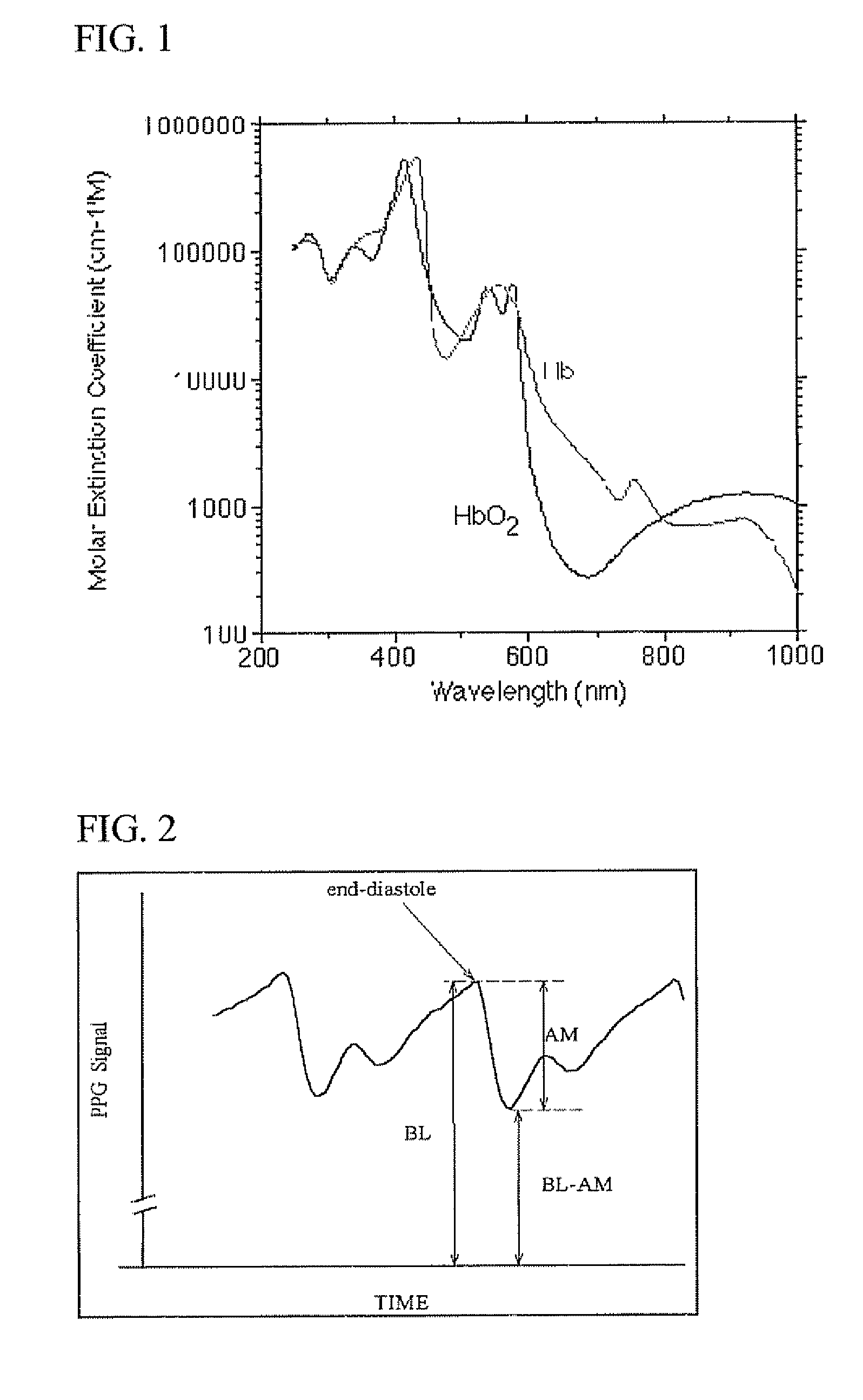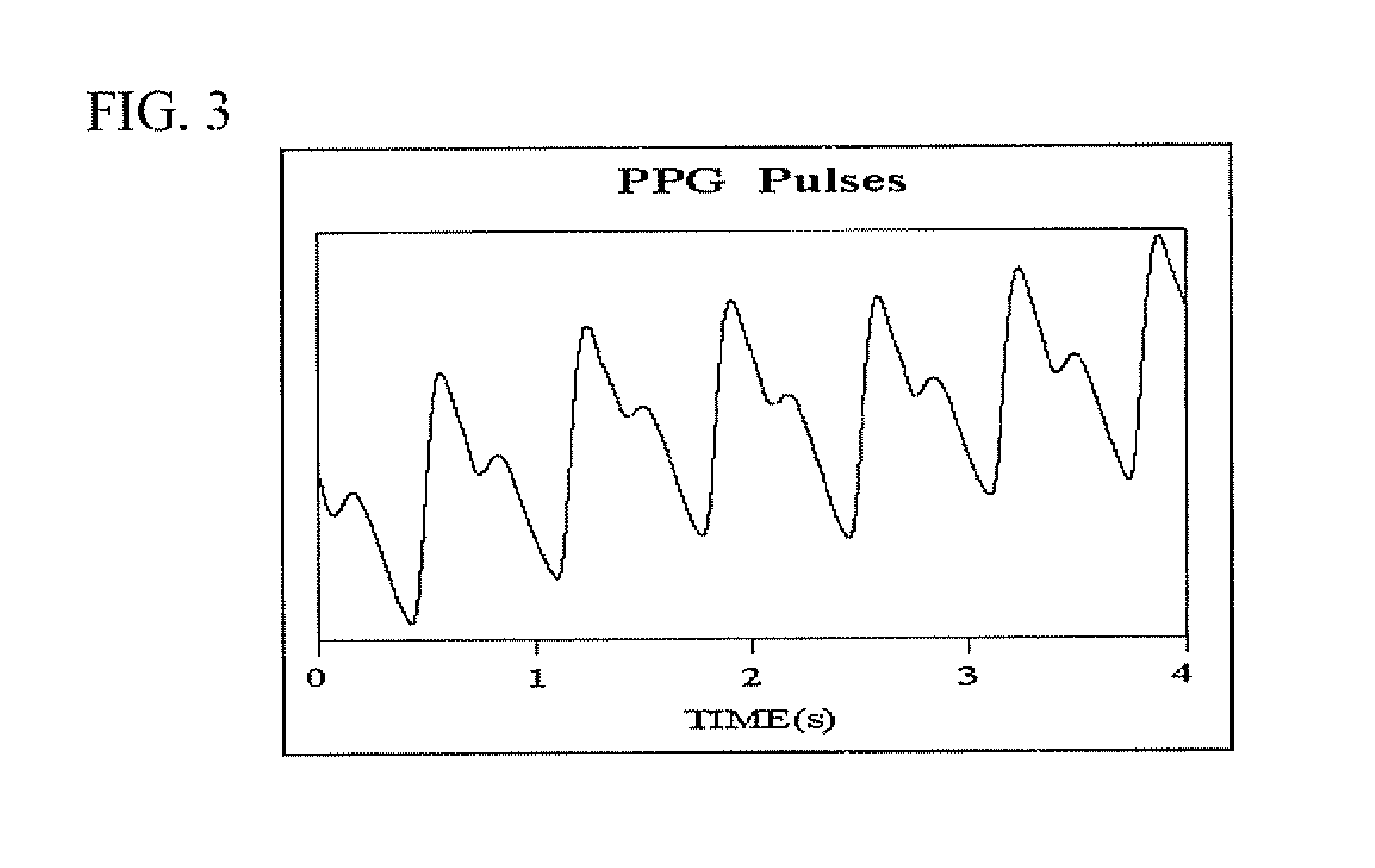Modified Pulse Oximetry Technique For Measurement Of Oxygen Saturation In Arterial And Venous Blood
a pulse oximetry and oxygen saturation technology, applied in the field of modified pulse oximetry technique for measuring oxygen saturation in arterial and venous blood, can solve the problems of limited validity of this assumption, non-negligible difference in optical path length between wavelengths, and limited accuracy
- Summary
- Abstract
- Description
- Claims
- Application Information
AI Technical Summary
Benefits of technology
Problems solved by technology
Method used
Image
Examples
Embodiment Construction
[0065]In the current invention, the transmission of light through the finger of three adjacent wavelengths in the infrared region, λ1, λ2, and λ3, will be measured for the assessment of SaO2. Equation (12) will be used for the two pairs λ1, λ2, and λ3:
SaO2=ɛd1-R12(l1 / l2)ɛd2R12(l1 / l2)(ɛ02-ɛd2)+(ɛd1-ɛ01)SaO2=ɛd1-R13(l1 / l3)ɛd3R13(l1 / l3)(ɛ02-ɛd3)+(ɛd1-ɛ01)(13)
where R12 and R13 are the ratio of the relative changes in light transmission ΔIa / IS for the two wavelengths λ1 and λ2 and the two wavelengths λ1 and λ3, respectively, and l1, l2 and l3 are the path-lengths of the three wavelengths, λ1, λ2, and λ3, respectively.
[0066]R12 and R13 of Equation (13) can be measured and the extinction coefficients for the three wavelengths can be found for oxygenated blood εo and for deoxygenated blood εd in the literature. FIG. 1 shows a graph of the extinction coefficients for oxygenated blood (HbO2) and for deoxygenated blood (Hb) as a function of the wavelength. However, in order to determine SaO2, ...
PUM
 Login to View More
Login to View More Abstract
Description
Claims
Application Information
 Login to View More
Login to View More - R&D
- Intellectual Property
- Life Sciences
- Materials
- Tech Scout
- Unparalleled Data Quality
- Higher Quality Content
- 60% Fewer Hallucinations
Browse by: Latest US Patents, China's latest patents, Technical Efficacy Thesaurus, Application Domain, Technology Topic, Popular Technical Reports.
© 2025 PatSnap. All rights reserved.Legal|Privacy policy|Modern Slavery Act Transparency Statement|Sitemap|About US| Contact US: help@patsnap.com



